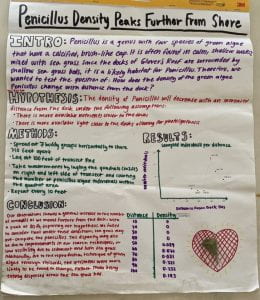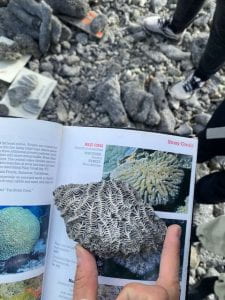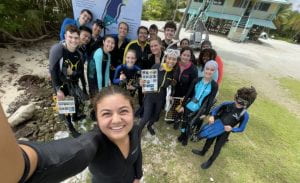Today was a mix of data, discovery, and a little bit of fish guts. We started our morning putting together our research poster on trash distribution around Middle Caye. We compared three areas: the mangroves, the beach by the dorms, and the coral graveyard. The idea was to see where trash builds up the most and what types show up where—like plastic, metal, or fishing gear. Unfortunately, our results were inconclusive. The trash density varied so much, and our measurement method didn’t give us the consistency we hoped for. Still, we learned a lot about how unpredictable (and messy) real-world science can be.
In the afternoon, things got fishy—literally. We dissected a lionfish, one of the most invasive predators in the Caribbean. They’re originally from the Indo-Pacific but have spread rapidly in Atlantic and Caribbean waters. It was fascinating to see the anatomy up close—sharp spines, a big stomach, and lots of muscle. These fish can eat over 50 different species and have no natural predators here, which makes them a huge problem for reef ecosystems.
This dissection hit close to home for me because my lecture presentation is on lionfish, and more importantly, they directly threaten my assigned taxonomic group: soft corals. While lionfish don’t eat corals, they prey heavily on small fish that graze on algae. Without those grazers, algae overgrows and smothers soft corals, which are already sensitive to changes in light, water quality, and space competition. It’s a chain reaction that shows how a single invasive species can impact organisms it doesn’t even touch.








